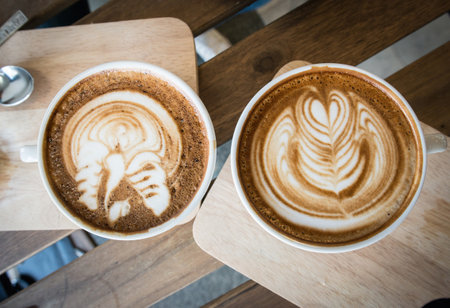1. Understanding the Third Wave Coffee Movement
The Third Wave Coffee Movement is more than just a trend—its a cultural shift in how Americans think about coffee. Unlike the first wave, which focused on making coffee accessible through mass production (think Folgers and instant coffee), and the second wave, which brought us big chains like Starbucks and popularized espresso drinks, the third wave is all about quality, transparency, and craftsmanship.
What Is the Third Wave?
The term “Third Wave Coffee” was coined in the early 2000s to describe a growing community of roasters, baristas, and consumers who view coffee as an artisanal product rather than a commodity. This movement emphasizes single-origin beans, sustainable farming practices, direct trade with farmers, and precise brewing methods that highlight the unique flavors of each coffee variety.
How It Differs From Previous Waves
To better understand what sets the third wave apart, take a look at this comparison:
| Wave | Focus | Key Players | Coffee Style |
|---|---|---|---|
| First Wave | Convenience & Accessibility | Folgers, Maxwell House | Instant coffee, canned ground coffee |
| Second Wave | Experience & Variety | Starbucks, Peet’s Coffee | Lattes, flavored drinks, espresso-based beverages |
| Third Wave | Quality & Origin Transparency | Blue Bottle, Stumptown, Intelligentsia | Single-origin brews, pour-over, cold brew with traceable sourcing |
The Philosophy Behind It
This movement treats coffee similarly to how wine or craft beer is appreciated. Enthusiasts care deeply about where their beans come from, how theyre roasted, and how theyre brewed. The goal isn’t just to drink caffeine but to enjoy the full flavor profile of the bean—from fruity Ethiopian notes to chocolatey Colombian tones.
Sourcing Matters
Third wave roasters often work directly with farmers through direct trade relationships. This not only ensures better pay for growers but also gives roasters more control over bean quality. Transparency in sourcing allows customers to know exactly where their coffee comes from and how it was produced.
A Craftsmanship Approach
The brewing process is taken seriously in third wave cafes. Baristas are trained like artisans—measuring water temperature, grind size, and brew time to bring out specific flavors. Brewing methods such as pour-over, Chemex, siphon brewing, and AeroPress are common sights.
A Growing Cultural Movement
The third wave isnt just about better coffee—it reflects a broader cultural movement toward mindful consumption. Much like farm-to-table dining or craft breweries, it appeals to consumers who value authenticity, sustainability, and quality over convenience or cost alone.
The Impact on Daily Coffee Habits
This shift has changed what people expect from their daily cup of joe. More Americans are willing to spend extra time and money for a thoughtfully sourced and carefully brewed cup. Local cafes are becoming community hubs where people gather not just for caffeine—but for conversation, connection, and culture.
The Third Wave Coffee Movement continues to grow as more people discover the story behind each bean—and choose to be part of that story themselves.
2. The Rise of Specialty Coffee Culture in America
Over the past two decades, cities across the United States have transformed into hotspots for specialty coffee culture. This movement, part of whats known as the “Third Wave” of coffee, focuses on treating coffee as an artisanal product rather than a commodity. It’s not just about grabbing a cup of joe anymore—its about understanding where the beans come from, how they’re roasted, and how they’re brewed.
Local Roasters Leading the Way
American roasters have played a huge role in shaping this new wave. Instead of mass-produced blends, these local businesses focus on small-batch roasting and single-origin beans. Cities like Portland, Seattle, San Francisco, and Brooklyn have become breeding grounds for innovative roasting techniques and sustainable sourcing practices. These roasters often work directly with farmers around the world to ensure fair trade and top-quality beans.
The Role of Baristas
Baristas are no longer just employees behind the counter—theyre trained professionals who bring out the best flavors in each cup. With skills in everything from pour-over methods to latte art, these coffee experts help educate customers about flavor profiles and brewing styles. Many baristas even compete in national competitions to showcase their talents and push the boundaries of what coffee can be.
Consumer Appreciation Is Growing
More and more Americans are becoming curious about where their coffee comes from. They’re asking questions like: Is it organic? Was it ethically sourced? What country is it from? This growing awareness has created a demand for transparency and quality that big chains often struggle to meet. Consumers are willing to pay more for a better-tasting cup that aligns with their values.
Specialty vs Big Chains: A Quick Comparison
| Aspect | Specialty Coffee Shops | Big Chains |
|---|---|---|
| Sourcing | Direct trade, single-origin | Bulk purchasing, mixed origins |
| Roasting Style | Small batch, light-to-medium roast | Mass production, dark roast |
| Customer Experience | Personalized, educational | Fast service, standardized menu |
| Barista Training | Highly skilled & competitive | Basic service-focused training |
Cities at the Heart of the Movement
Certain U.S. cities have become synonymous with great coffee thanks to their vibrant communities of roasters and cafes:
- Portland, OR: Known for its experimental approach to coffee and sustainability efforts.
- Seattle, WA: Birthplace of Starbucks but also home to countless independent shops pushing craft coffee forward.
- Austin, TX: Merging southern hospitality with a love for third-wave brewing methods.
- Los Angeles, CA: A hub for stylish cafés and innovative cold brew trends.
This rise in specialty culture shows how American tastes are evolving—and how small players are making a big impact by focusing on quality over quantity.
![]()
3. The Role of Independent Cafés and Roasters
Independent coffee shops and small-batch roasters are the heart of the third wave coffee movement. These local businesses do more than just serve a good cup of coffee—they create spaces that bring people together, experiment with new brewing techniques, and build meaningful relationships with coffee farmers around the world.
Fostering Community Through Coffee
Unlike big chains that often focus on speed and convenience, indie cafés emphasize connection and atmosphere. Customers get to know baristas by name, participate in community events, and enjoy cozy environments that reflect local culture. These shops often double as creative hubs—hosting art shows, poetry nights, and live music.
Driving Innovation in Coffee Culture
Small roasters and cafés are leading the way in experimenting with sourcing methods, roast profiles, and brewing gear. From pour-over stations to siphon brewers, these businesses arent afraid to push boundaries. Their focus is on quality over quantity, encouraging slow-sipping experiences that highlight the unique flavors of each bean.
Common Brewing Methods at Indie Cafés
| Method | Description | Flavor Profile |
|---|---|---|
| Pour-Over | Manual brewing using a filter cone for precise control | Clean, bright, layered flavors |
| Aeropress | Portable press-style method combining pressure and immersion | Smooth, rich body with clarity |
| Siphon | A vacuum-based brewing system using heat to extract flavors | Delicate, tea-like with aroma intensity |
Building Direct Trade Relationships
Many independent roasters are committed to sourcing beans through direct trade rather than traditional commodity markets. This means they work directly with farmers, paying fair prices and investing in long-term partnerships. It ensures higher-quality beans for the roaster and better income for growers—everyone wins.
Direct Trade vs Traditional Sourcing
| Aspect | Direct Trade | Traditional Sourcing |
|---|---|---|
| Farmer Relationship | Personal connection & long-term partnership | Mediated by brokers or importers |
| Price Paid to Farmers | Above market rate (often significantly) | Market-based pricing; lower margins for farmers |
| Coffee Quality Control | High involvement from farm to cup | Less transparency; variable quality |
The Bigger Picture: Why It Matters
The rise of independent cafés and roasters is reshaping how Americans think about coffee. Its no longer just a caffeine fix—its a craft beverage with a story behind every cup. By supporting these local businesses, customers become part of a global movement that values sustainability, transparency, and human connection.
This cultural shift challenges big chains to evolve, while empowering communities to build something meaningful—one cup at a time.
4. How Big Chains Are Responding
The rise of the third wave coffee movement—focused on quality, transparency, and craftsmanship—has shaken up the traditional coffee industry. In response, major chains like Starbucks and Dunkin’ are evolving their strategies to stay relevant and compete with independent specialty shops.
Single-Origin Coffee Offerings
One of the biggest moves by corporate coffee chains has been the introduction of single-origin coffee lines. Third wave coffee drinkers value knowing where their beans come from, how they’re grown, and how they’re roasted. To meet this demand, big brands are now featuring limited-edition or seasonal single-origin coffees that highlight unique flavor profiles from specific regions around the world.
Comparison of Coffee Sourcing Strategies
| Brand | Traditional Approach | Third Wave-Inspired Strategy |
|---|---|---|
| Starbucks | Global blends with consistent taste | Reserve line featuring small-lot, single-origin beans |
| Dunkin’ | Mainstream blends for mass appeal | Limited-time offers featuring 100% Arabica single-origin beans |
Barista Training and Experience Upgrades
The third wave movement places a strong emphasis on skilled baristas who understand extraction techniques, bean origins, and brewing methods. Recognizing this shift, big chains have started investing more in staff training programs. Starbucks, for example, has introduced advanced barista certifications for employees working at its Reserve locations. These stores are designed to offer a more elevated experience with pour-over stations and manual brewing options.
Differentiating Store Experiences
Larger chains are also rethinking store design and customer interaction. New concept stores often feature a slower-paced environment with an emphasis on craft and education—mirroring what customers find in third wave cafés.
| Chain | Tactical Shift in Store Experience |
|---|---|
| Starbucks Reserve Bars | Sleek interiors, manual brewing options, storytelling about origin and roast profiles |
| Dunkin’ Next Gen Stores | Simplified menus with occasional specialty offerings and improved brew equipment |
The Balance Between Scale and Specialty
The challenge for these companies is finding the balance between delivering high-quality specialty products while maintaining the consistency and efficiency their large-scale operations require. It’s not easy to replicate the intimacy of a neighborhood roaster at thousands of locations nationwide—but by adopting select third wave principles, theyre trying to capture some of that magic.
This evolving approach shows how seriously major players are taking the third wave trend—not just as a fad, but as a long-term shift in consumer expectations around coffee culture.
5. Challenges and Opportunities Ahead
The Third Wave Coffee Movement has changed the way Americans think about coffee—shifting from mass-produced brews to high-quality, ethically sourced cups. But with all its growth and influence, this movement is not without its challenges. From sustainability concerns to issues of accessibility and scalability, third wave coffee faces real hurdles. Still, there are also exciting opportunities for expansion and innovation.
Sustainability: More Than Just a Buzzword
Third wave roasters often highlight their commitment to ethical sourcing, but maintaining truly sustainable practices across the board is complex. Many small-scale farms struggle with climate change, fluctuating market prices, and limited resources for eco-friendly farming methods. While direct trade helps ensure better wages for farmers, it’s not always consistent or scalable.
Common Sustainability Challenges
| Challenge | Description |
|---|---|
| Climate Change | Rising temperatures and unpredictable weather affect coffee crop yields. |
| Fair Compensation | Ensuring fair pay for farmers while keeping retail prices competitive. |
| Environmental Impact | Packaging waste and energy use in roasting facilities need improvement. |
Accessibility: Quality vs. Affordability
One of the biggest criticisms of third wave coffee is that it can feel exclusive or elitist. With $6 pour-overs and minimalist cafes concentrated in urban areas, many everyday coffee drinkers feel left out of the experience. Bridging this gap means finding ways to offer quality without alienating budget-conscious consumers.
What’s Driving Accessibility Issues?
- Price Point: Higher costs for beans and labor translate into higher retail prices.
- Location: Third wave shops are mostly found in big cities, limiting access for rural or suburban customers.
- Coffee Culture: The focus on tasting notes and brewing techniques can feel intimidating to newcomers.
Scalability: Growing Without Losing Identity
The very things that make third wave coffee special—small-batch roasting, personal relationships with farmers, unique café experiences—are hard to replicate on a large scale. As these businesses grow or get acquired by larger companies, they risk diluting their brand values or compromising quality.
Scaling Up Responsibly
Coffee companies that want to expand without losing what made them unique are experimenting with different approaches:
- Franchise Models: Expanding through carefully selected franchisees who share the company’s values.
- Sourcing Hubs: Creating regional hubs to support local farmers and reduce carbon footprints.
- Education Programs: Training baristas and consumers alike to maintain high standards across locations.
Avenues for Growth and Broader Reach
The good news? There are plenty of opportunities ahead for third wave coffee brands willing to innovate:
| Opportunity | Description |
|---|---|
| Subscription Services | Delivering specialty beans directly to consumers nationwide increases accessibility. |
| Diverse Product Lines | Canned cold brews, instant specialty coffee, and ready-to-drink options bring quality coffee to more people. |
| Bilingual Branding & Education | Reaching multicultural communities through inclusive marketing and language options. |
| Sustainability Certifications | Earning trust through verified eco-labels like Rainforest Alliance or Fair Trade. |
The Third Wave Coffee Movement has an exciting road ahead. By facing these challenges head-on—and embracing new avenues for growth—it can continue reshaping America’s coffee culture for the better.


